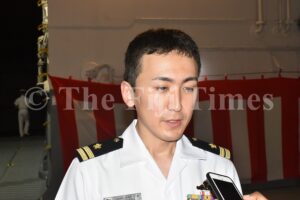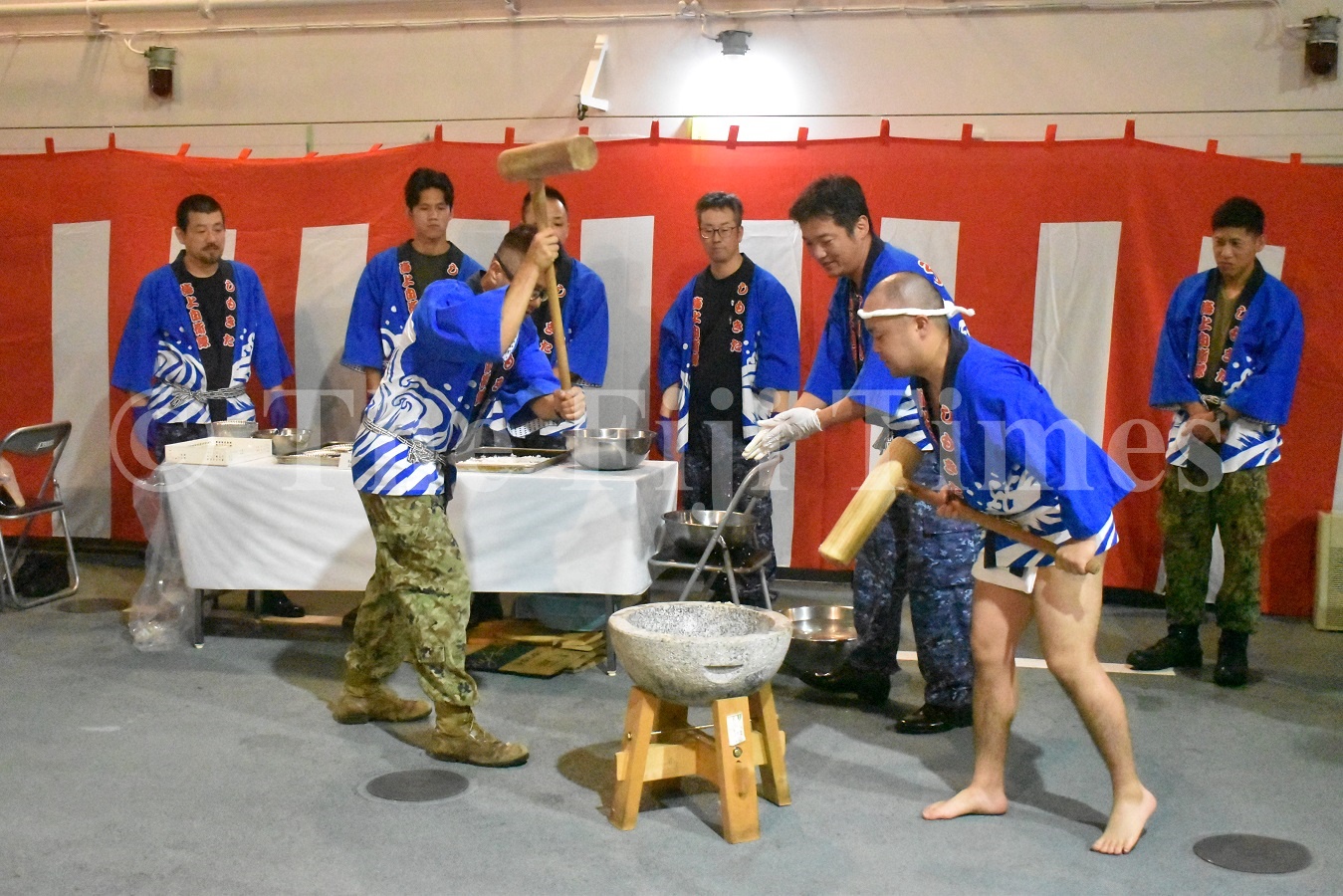Last Thursday, the Japanese Maritime Self-Defense Force (JMSDF) ship JS Shimokita, berthed at the port in Suva for the first time.
She was commanded by Rear Admiral Upper Half, Motoyuki Kanezashi and navigated by Lieutenant, Kawase Yuya, who led a team of 10 and safely manoeuvred the vessel from Noumea in New Caledonia to Fiji.
JS Shimokita’s maiden visit to Fiji was part of its Indo-Pacific Deployment 2023 (IPD23) iniative, targetted at improving and strengthening cooperation with partner naval forces in the Indo- Pacific region through joint exercises. JMSDF is on a two-month operation before its return to Japan by September.
Onboard the ship were approximately 140 naval crew members along with around 200 personnel of the Amphibious Rapid Deployment Brigade of the Japan Ground Self Defense Force.
During a reception aboard the naval ship last week, hosted by the Chief of Staff, Joint Staff General, Yoshihide Yoshida, Lt. Kawase said the 24-year-old landing ship was constructed and tasked for transporting vehicles suited for landing operations.
Describing the journey from Noumea to Suva, Lt. Kawase said he had enjoyed the easy and troublefree travel and gave credit to the calm weather.
For many naval officers and seamen aboard , it was their first time in Fiji, however, Lt Kawase had been to Fiji on a previous operation four years ago.
“I joined the navy about six years ago,” he told The Sunday Times.
“ I liked how the job would allow me to communicate with foreign people and give me an opportunity to contribute to peace and security,” Lt Kawase explained, adding he had only been a navigator for a year now.
“For this operation, we had two main missions. One was to participate in an exercise in Australia and to promote Japan’s friendship through joint exchange programs in two Pacific nations.”

Picture: ATU RASEA
And this they did, from sports exchange with the Republic of Fiji Military Forces, to mangrove planting at Matainoco Village with the RFMF and United States Armed Forces and a joint training exercise with the Republic of Fiji Navy.
The highlight of the trip was perhaps the night of the reception last Friday, which was attended by Fiji’s creme de la creme — government ministers, members of the diplomatic corps and other dignitaries, to celebrate friendship and cooperation.
Guests were led aboard on a red carpet, lined with officers welcoming and saluting.
The initial experience on the boat gave us a glimpse of Japan and Japanese culture.
Officers spoke fondly of their short adventure the day before as they walked the streets of Suva and indulged in coconut crab curry.
Two of them expressed interest in the topic of anime with a colleague of mine, anime meaning Japanese animation.
They also spoke of how Fiji Bitter was excellent beer and you could tell by their cheerful expression.
The crew performed a mochi making ceremony called mochitsuki where they pounded steamed short-grain Japanese rice, mochigome.
The mochitsuki ceremony consists of one or two people pounding sticky rice with wooden mallets in a traditional mortar while yelling “tsuki.”
As a guest, I later got to taste this freshly made mochi. This small, plain, white ball-shaped nese dessert was slightly sweet, squishy, elastic and had a delight- Japafully chewy quality.
There was also a display of kendo, a traditional Japanese martial art sport where one wears protective gear with a face armour over a kimono like training outfit and fights with bamboo swords.
An officer explained that in kendo attire, the helmet was called the ‘men’, the breastplate ‘do’ and the gauntlets ‘kote.’
Kendo is said to have stemmed from the Japanese samurai and is used more for personal development and discipline.
The final show for the night involved military officers displaying training exercises and techniques es including the use of guns and tactical knives and an intensive hand-to-hand combat.
And just like that, the night drew to an end and we bid farewell to the officers onboard using one of the few Japanese terms I knew, ‘Sayonara.’



